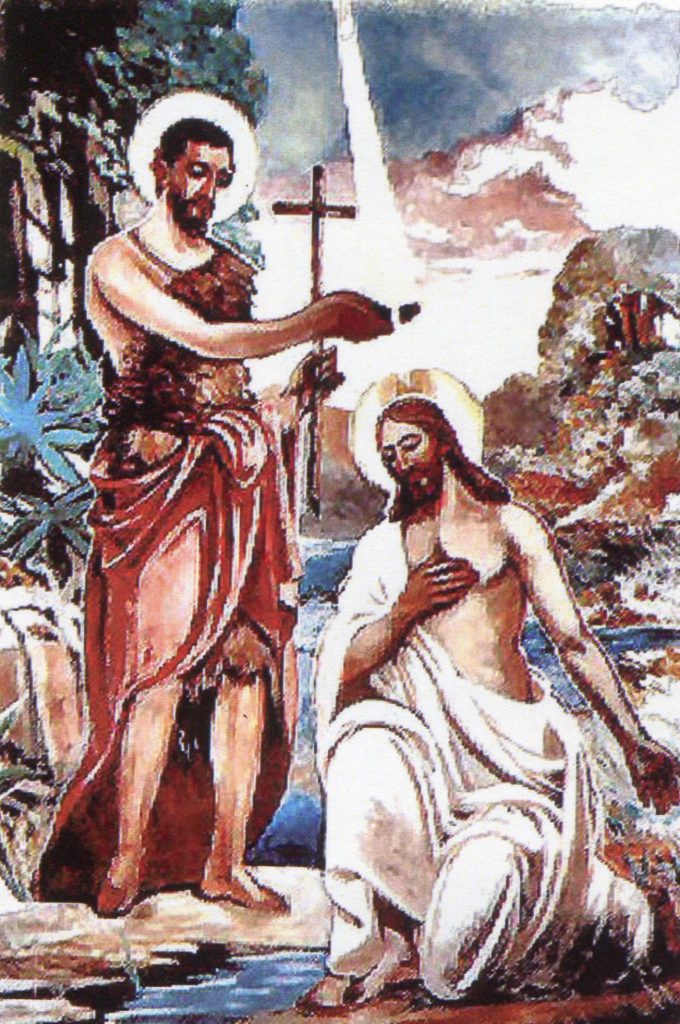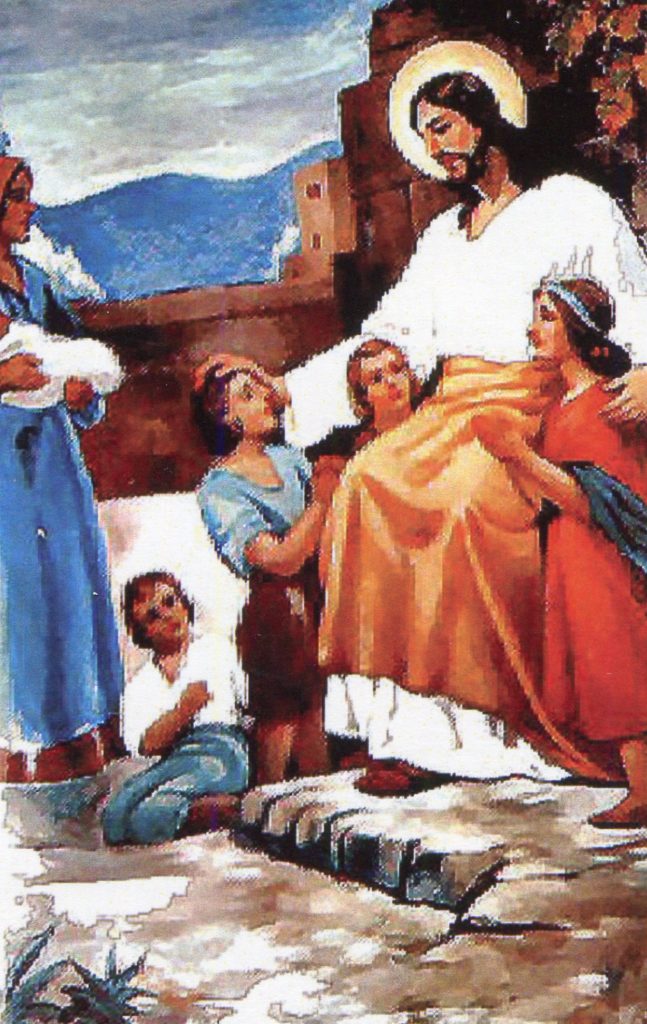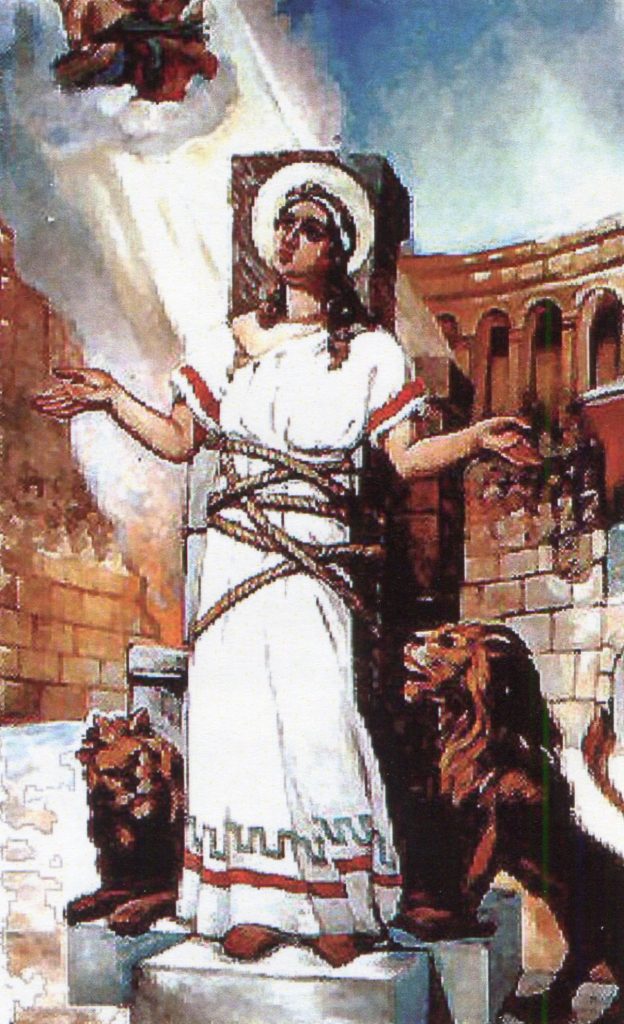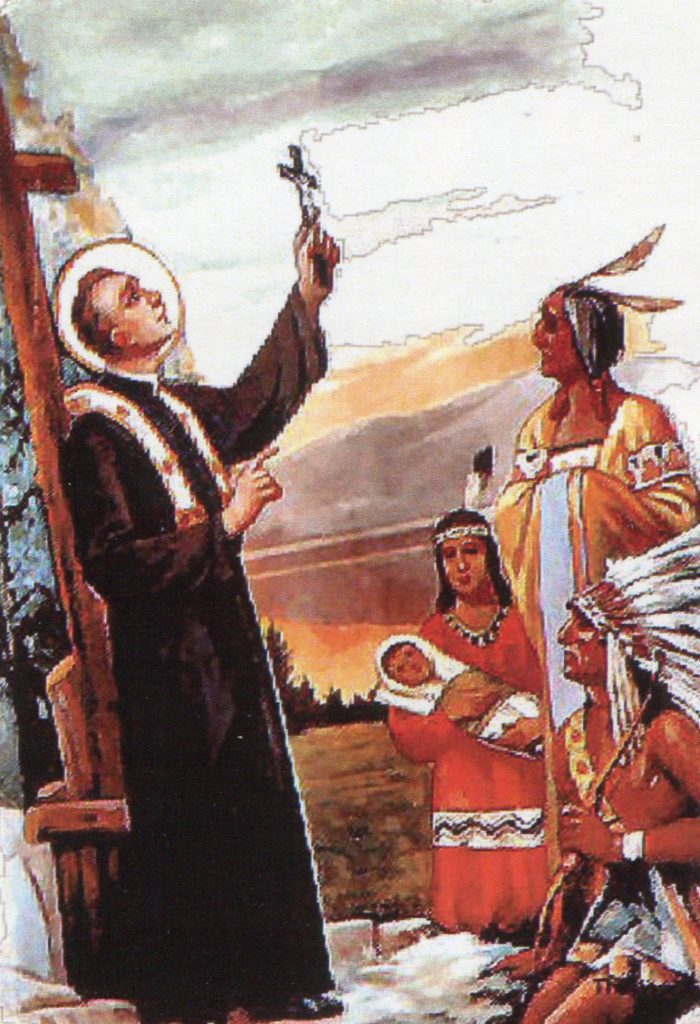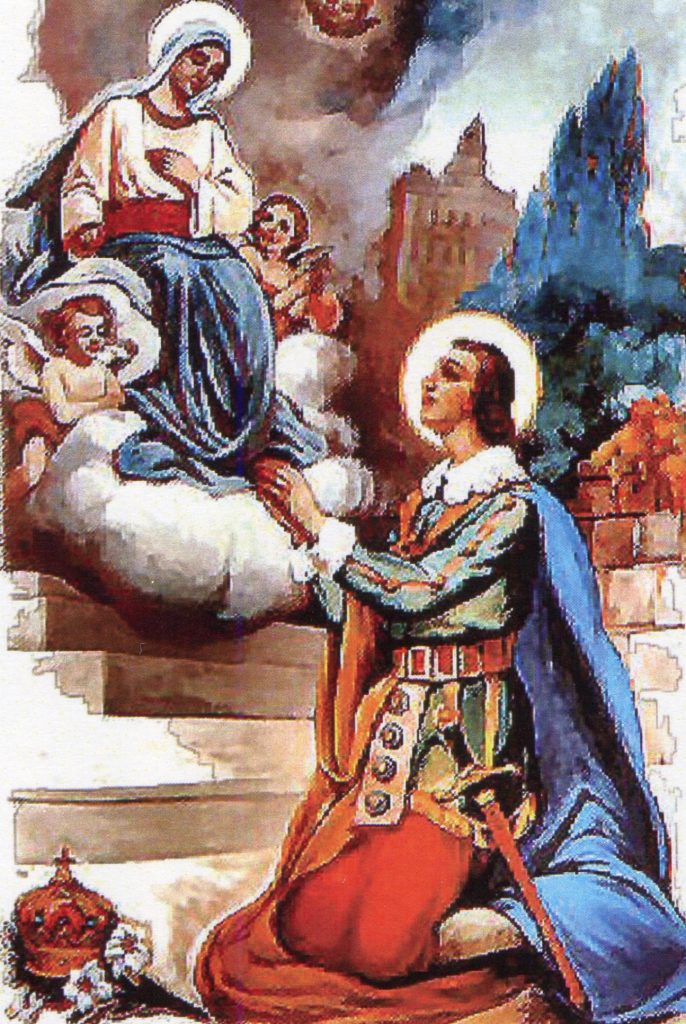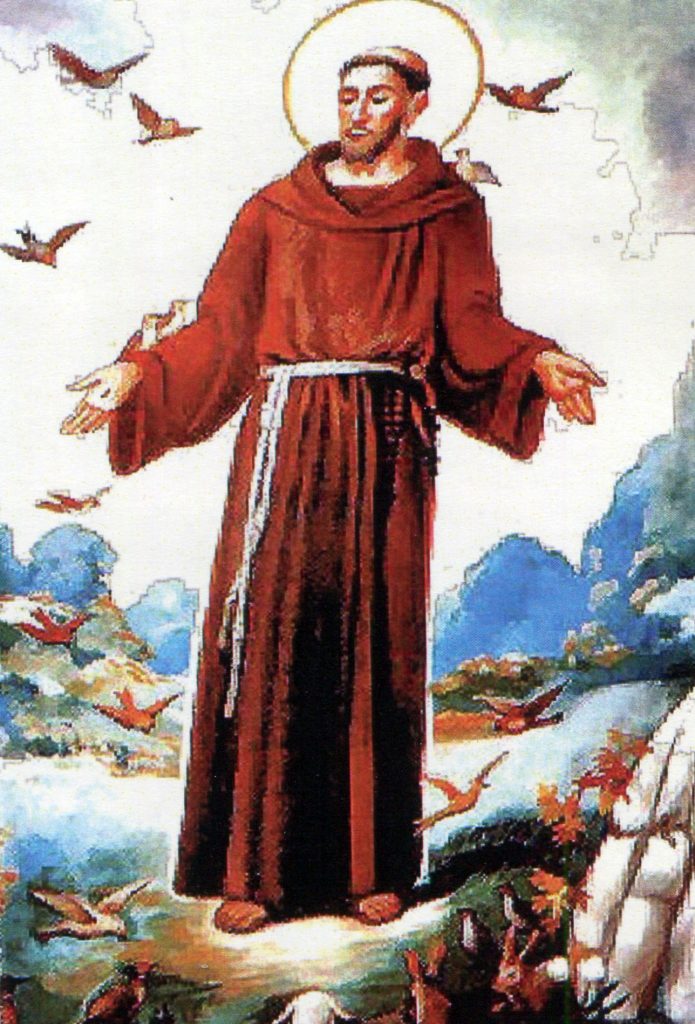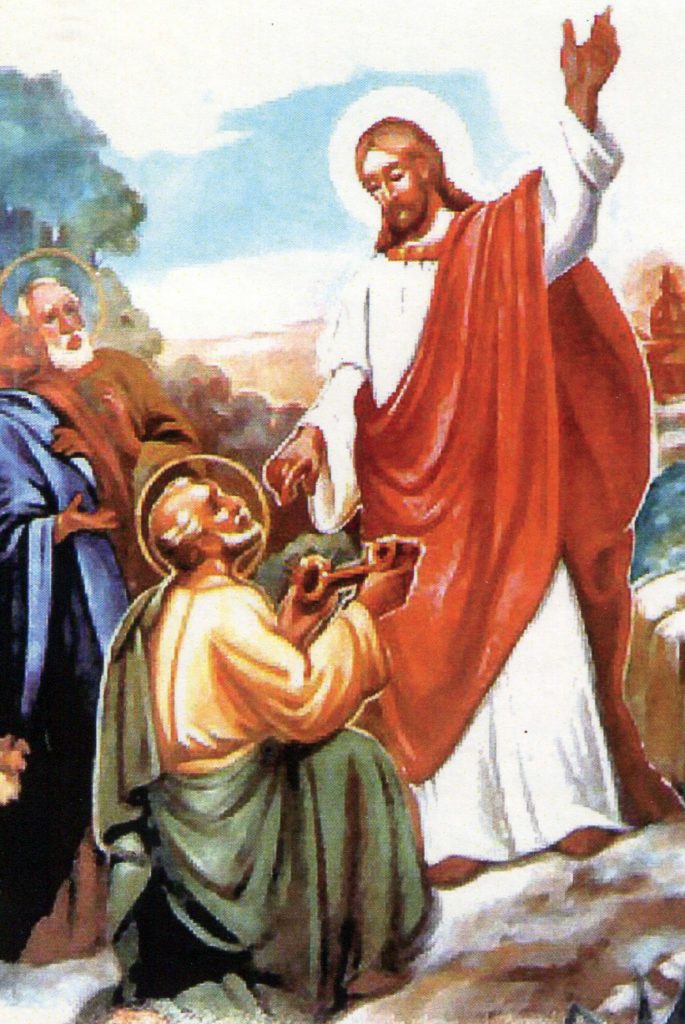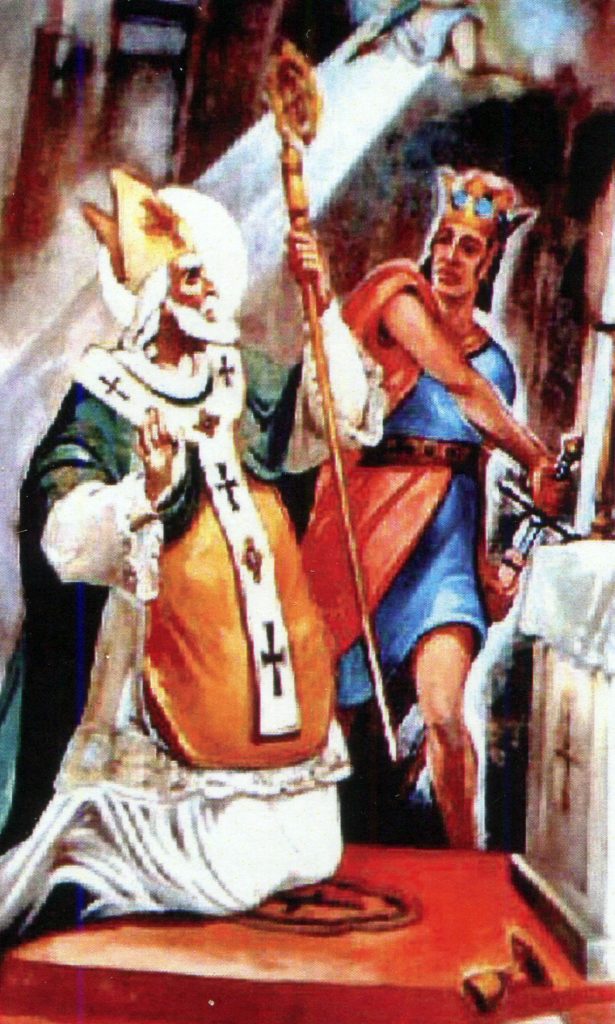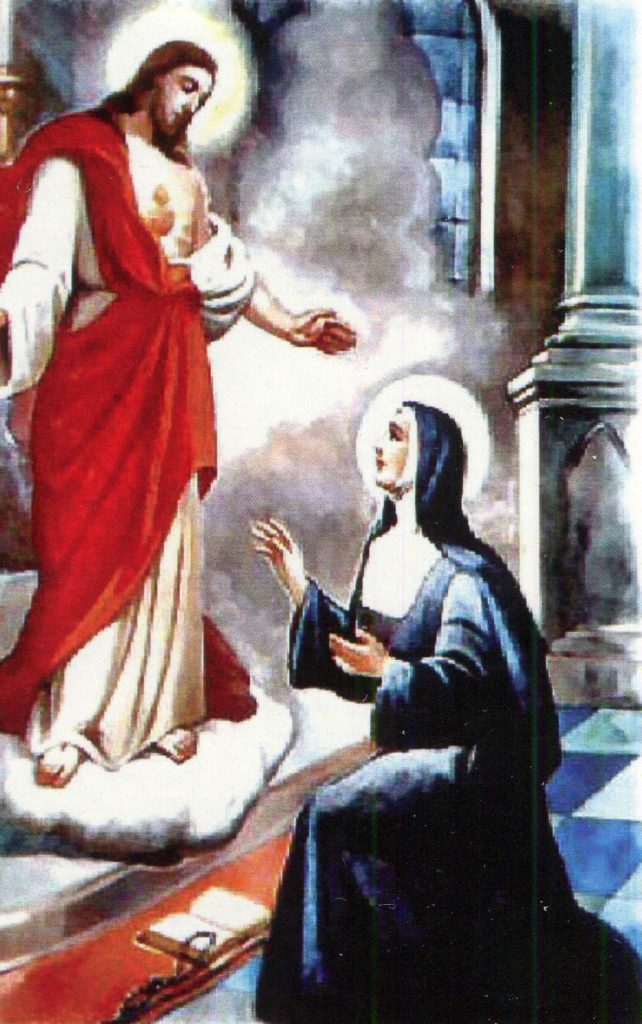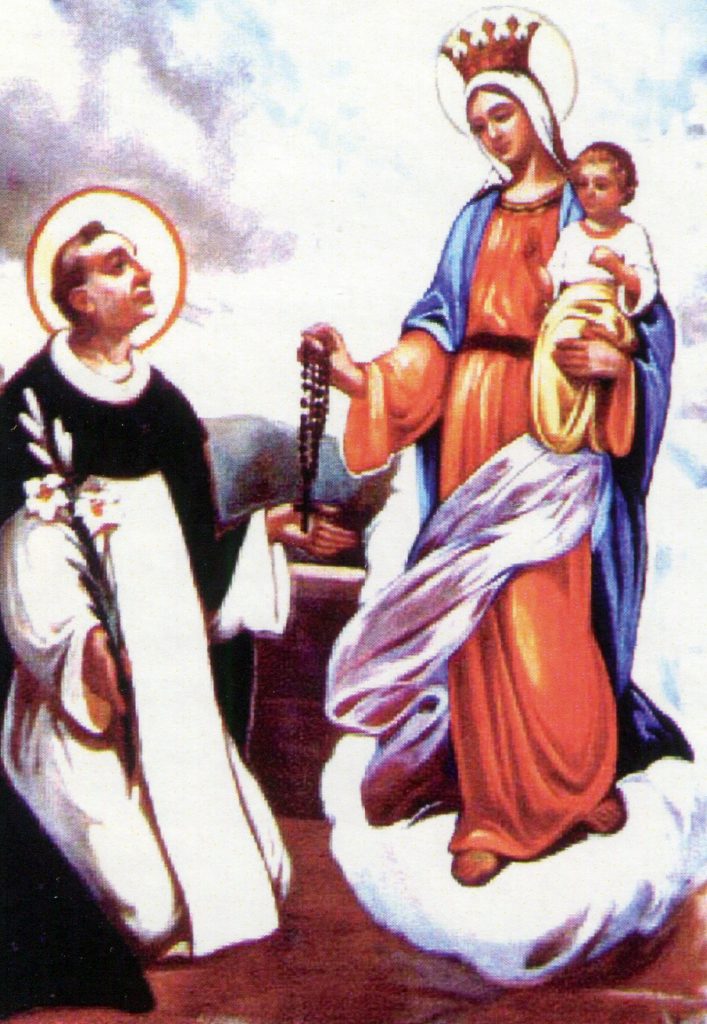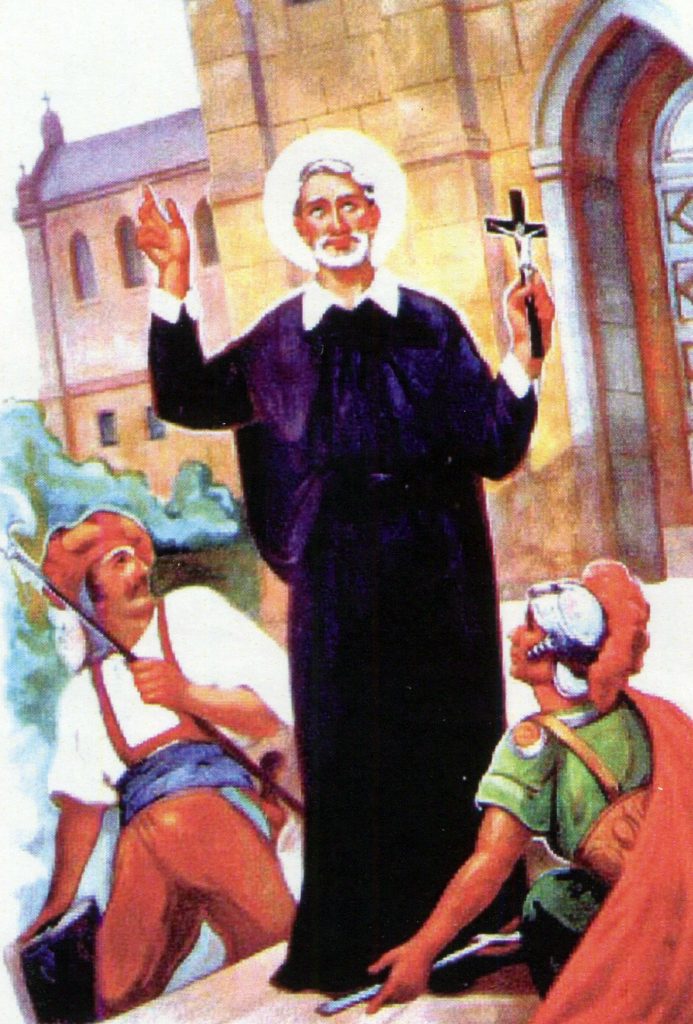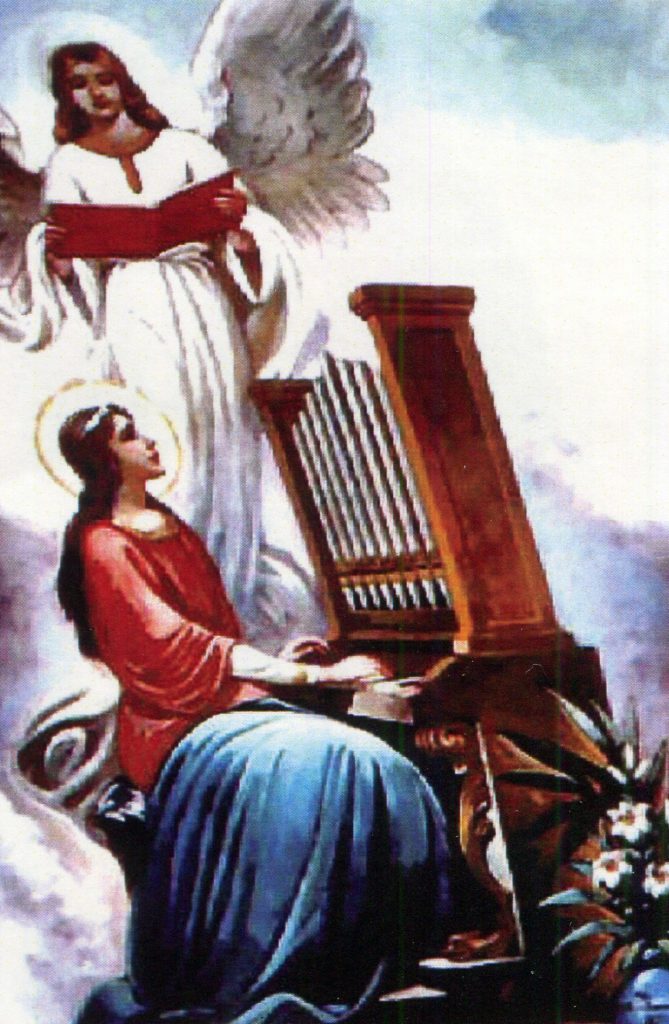THE PAINTINGS AND LARGE MURALS
Art is expressed in many forms. There is sculpture, glass, metal carvings, wooden objects and painted canvases and walls. This last medium of art expression is found at least 16 times in this Church structure.
Above the high altar is a circular two-foot painting of a lamb on a book. Representing a vision of St. John, the Apostle from the Book of Revelation, the lamb is to signify Our Lord and the open book, His Written Word of Salvation.
This was removed during the 1970s renovations:
At the entrance of the church above the main door to the nave, there was an angel with spread wings and holding a banner with a Latin Inscription “Venite Adoremus Domium”, “Come, let us Worship the Lord.”
Also removed in the 1970s renovations, two large paintings one each above the side altars. The one that was above the Sacred Heart altar recalled the birth of Jesus in Bethlehem. Mary was there, the Angels sang, and The Word of God was made Flesh that day! That picture, and the other large murals, has a definite blue overtone or background color. This was done as the Church was dedicated to Mary and her color in the Church is blue,
Also removed in the 1970s renovations, a large painting over the other side altar recalled the Annunciation of Mary. The Angel, Gabriel, tells Mary she is chosen to be the Mother of Jesus. That scene was captured by the artist and contained the blue tones.
CEILING MURALS
St. John baptizes Jesus at the Jordan River.
Jesus gathers the children and blesses them all.
An early martyr offers her life in a Roman amphitheater.
The Jesuit, St. Isaac Joques, teaches the Mohawk Indians in the New World.
The Polish-Lithuanian Prince, St. Casimir, expresses his devotion to Mary.
The 13th century St. Francis of Assisi finds happiness in nature.Jesus designates St. Peter as Keeper of the Keys for the Church.
The Bishop of Krakow, St. Stanislaus, is murdered at, the altar while at prayer.
St. Margaret learns of the love and concern of the Sacred Heart for mankind.
Mary presents St. Dominic with an instrument for converts the Rosary.
A priest saint proclaims peace to a tension-filled and warring people
A patron of church music, St. Cecilia is seated at the organ.
These paintings were executed by the Poli Studios of Pittsburgh and attached to the ceiling panels in the years immediately following World War 11.

